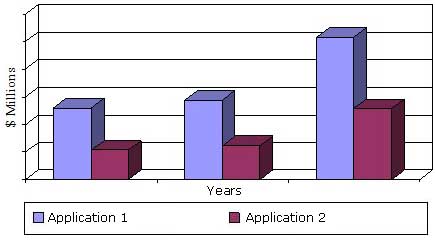March 26, 2015
Wellesley, Mass., March 26, 2015 –BCC Research reveals in its new report on medical laser devices that the global market for medical laser devices is gradually recovering from the global recession of 2008 and 2009. The market is expected to reach nearly $7.8 billion by 2019, reflecting an impressive five-year compound annual growth rate (CAGR) of 13.6%. Dentistry is the fastest-growing end-use segment, with a projected five-year CAGR of 20.7%, followed by veterinary medicine (16.5%) and cosmetic surgery (15.4%).
Lasers are used in a wide range of medical applications, from cosmetic procedures to diagnosis and therapy. Although the market share of therapeutic laser applications is larger than that of diagnostic applications, the latter is growing more rapidly, at a five-year CAGR of almost 16.1% vs. 12.4%, respectively. The diagnostic applications market share should increase to 33.3% in 2019, up from 29.3% in 2013.
Much of the demand for medical lasers comes from elective procedures like laser-assisted eye surgery, which many cost-conscious consumers postponed because of the recession. Ophthalmology was the largest end-use segment of the medical laser market in 2013, with global sales of more than $1.7 billion or 46.5% of the market, followed by cosmetic surgery ($895.1 million or 24.4%) and therapeutic surgery ($757.8 million or 20.7%).
The United States and Canada totaled 52.6% of the global market for medical lasers in 2013. By 2019, the Asia-Pacific market is expected to garner 21.1% of the global market, equaling Europe’s share and second-largest status among all developed economies.
“The long-term outlook for the medical laser market is positive,” says BCC Research analyst Andrew McWilliams. “Paradoxically, the market for lasers used in certain minimally invasive cosmetic surgical procedures (e.g., hair restoration, photo-rejuvenation with intense pulsed light, and laser body contouring) held up relatively well in the recession.”
The continuing evolution of medical laser technology will drive market growth. New laser sources with potential medical applications include fiber lasers, light-emitting diodes (LEDs), and organic LEDs (OLEDs). Plastic foils as surface emitters could become important as an irradiation source in photo-dynamic therapy (PDT). In addition to new laser sources, the development of new applicators and tool holders will continue to widen the range of applications for existing types of lasers. Finally, the spread of new laser applications such as nanosurgery, OCT, and sophisticated fluorescence microscopy will stimulate the growth of the medical laser market
Global Markets and Technologies for Medical Lasers examines the global market for lasers used in diagnostic, therapeutic, and cosmetic applications from 2013 through 2019. It analyzes the technological, economic, and regulatory forces that will influence market size, structure and growth.

Editors and reporters who wish to speak with the analyst should contact Steven Cumming at steven.cumming@bccresearch.com.
Global Markets and Technologies for Medical Lasers( HLC072C )
Publish Date: Feb 2015
Data and analysis extracted from this press release must be accompanied by a statement identifying BCC Research LLC as the source and publisher. For media inquiries, email press@bccresearch.com or visit www.bccresearch.com/media to request access to our library of market research.